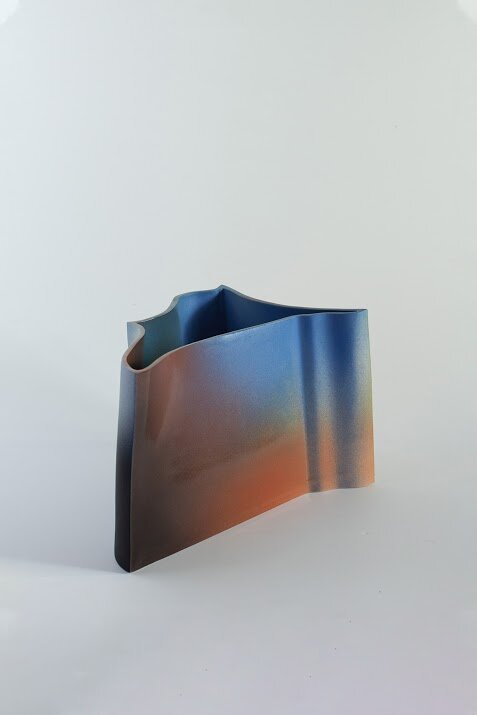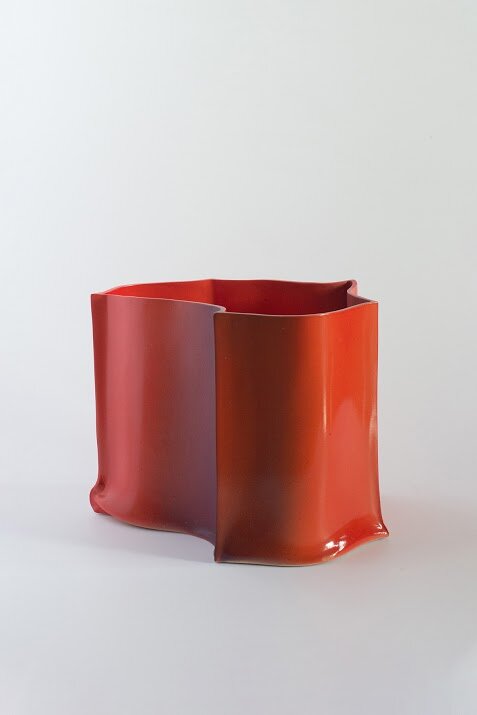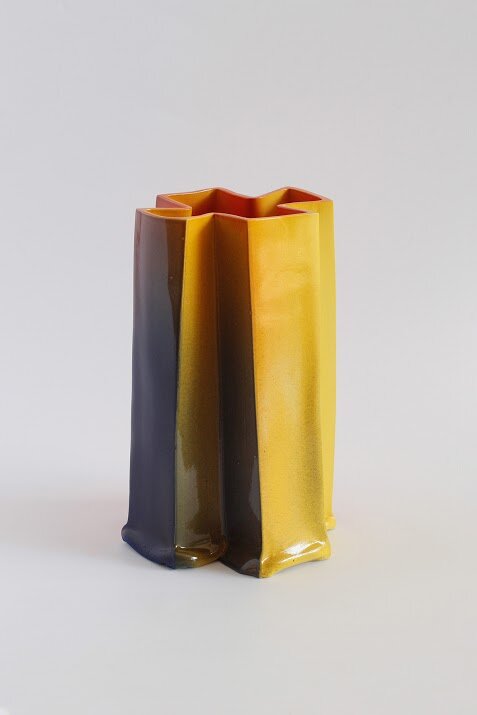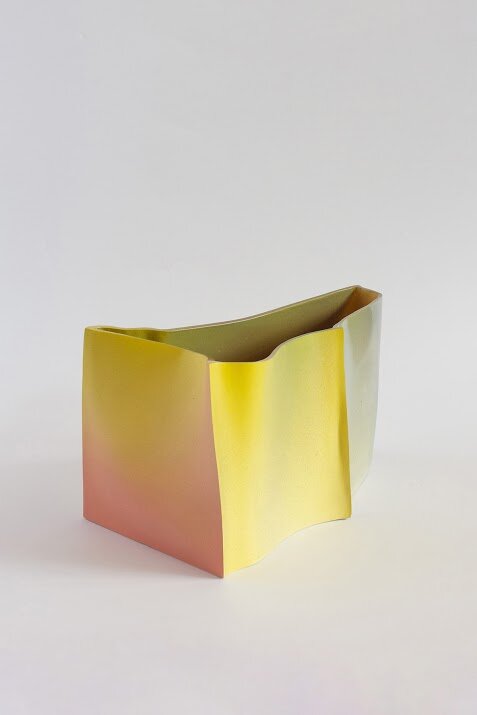Philipp Schenk-Mischke
BTM ceramics est une collection de céramiques qui sont déformés juste après les avoir démoulés, en les plaçant sur une plaque vibrante. Détournée de son objectif traditionnel dans l’industrie de la forme physique, elle devient un outil pour enquêter et créer de nouvelles idées, processus, expressions et artisanat.
Comment as tu commencé à travailler avec la céramique? Durant ma dernière année à Royal College of Art. J’ai toujours été intéressé par cette matière. Quand on a visité une grande usine dans le nord de l’Angleterre, J’ai été instantanément inspiré par la chorégraphie du travail fragmenté.
Comment tu définies ton travail ou ton état d’esprit en tant que designer? La résurrection de l’étonnement.
Est ce que tu continues à travailler avec la céramique et ou es tu basé? Oui! J’ai plusieurs projets qui vont bientôt sortir. Je suis basé à Londres et à côté de ma propre création, je travaille avec deux amis dans un studio plus commercial qui s’appelle (hypersuper.uk).
Comment tu entreprends la couleur? À la base c’était simplement pour faire ressortir les formes et contours, mais maintenant j’aime bien que ce soit un élément incertain, comme c’est toujours difficile de savoir comment les dégradés vont sortir du four et comment les couleurs se mélangent.
Expérimentes tu encore avec des machines? Je veux explorer beaucoup de choses et je cherche constamment le bon contexte!
Quelle est ta définition de l’artisanat? C’est une immersion dans un process ou une matière. Peu importe des détails. N’importe qui peut inventer son propre artisanat et être juge de ce qui est bien ou pas, basé sur une recherche personnelle.
Quel sont tes designers/artistes préférés? Pour le moment j’aime beaucoup le travail de Jessi Reaves, Dozie Kanu et Soft Baroque.
Site: schenkmischke.com
Instagram: @paradiseeditions
ENGLISH VERSION
How did you start working / playing with ceramics? During my final year at the Royal College of Art. I have always been interested in the material. When we visited a big ceramic factory in the north of England, I was instantly inspired by the choreography of the fragmented labour there.
How do you define your work or state of mind as a designer? The resurrection of wonder.
Do you still work with ceramics and where are you based? Yes! Watch out for new things soon. I am based in London and besides my own practice, I work with two friends as a more commercial design studio/consultancy called hypersuper (hypersuper.uk).
How do you integrate / decide color in your work? and why?Originally it was simply meant to enhance the shapes and edges, but now I like it for the element of uncertainty that comes with it, as it is always hard to predict how the gradients will come out of the kiln and how the colours actually mix.
Do you carry on experimenting with different type of machinery? I want to try too many things and am constantly looking for the right contexts!
What is your definition of craftsmanship? A profound immersion into a process or a material. It doesn’t matter what that entails in detail. Anyone could invent hers or his own craftsmanship and then even judge about what is good and bad, based on individual reasoning.
Which designers or artists inspire you the most? At the moment I really enjoy the works of Jessi Reaves, Dozie Kanu and Soft Baroque.





